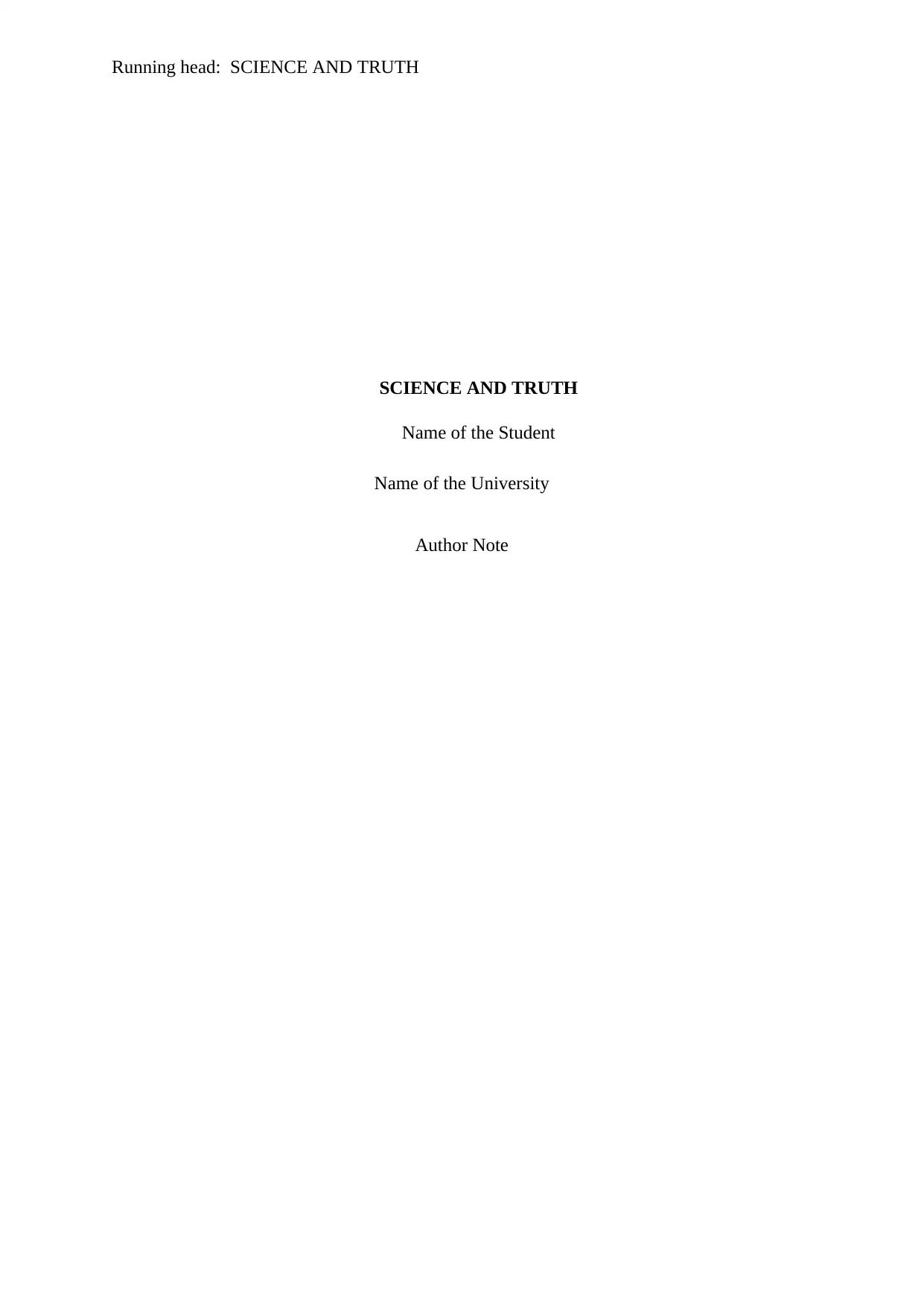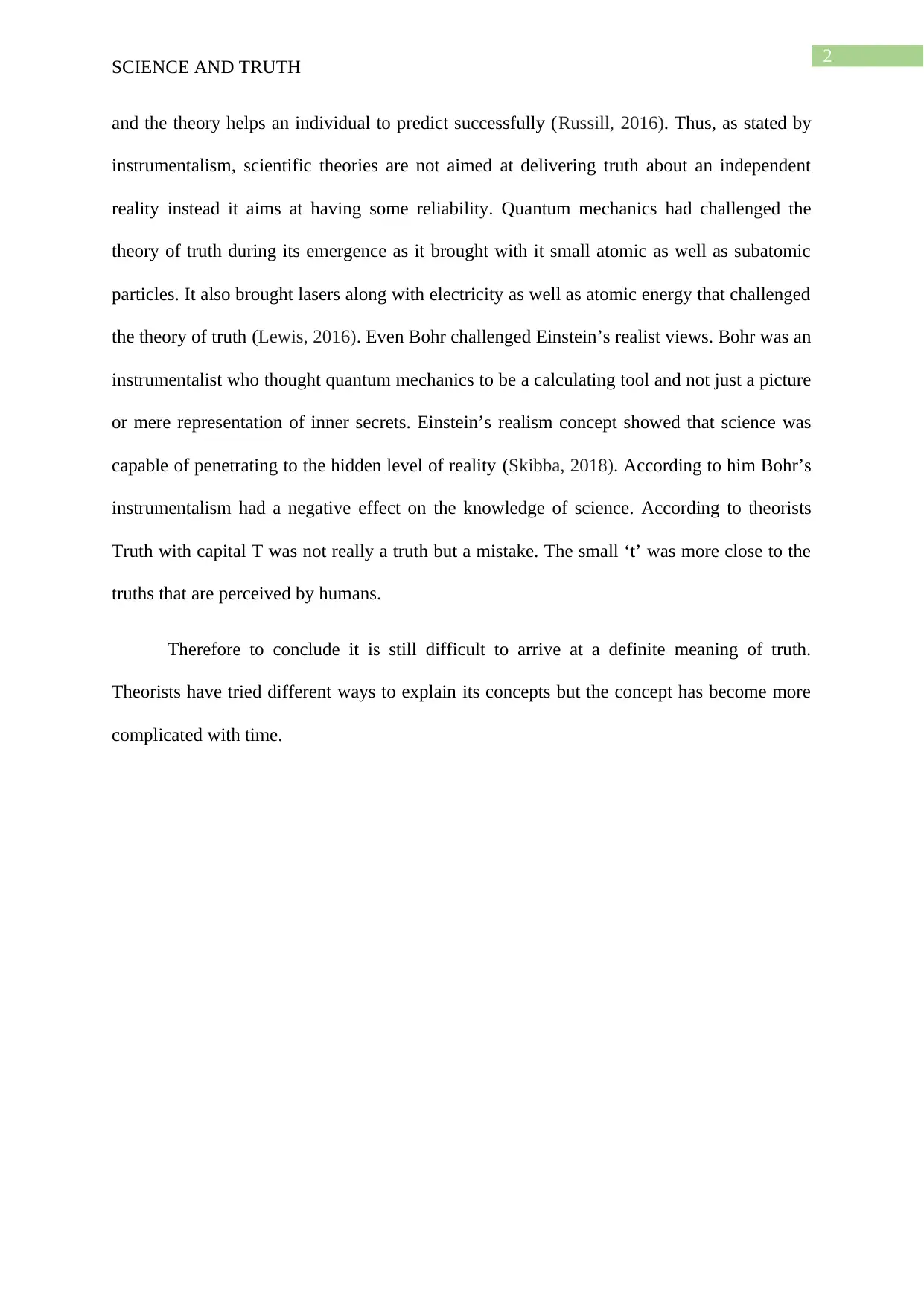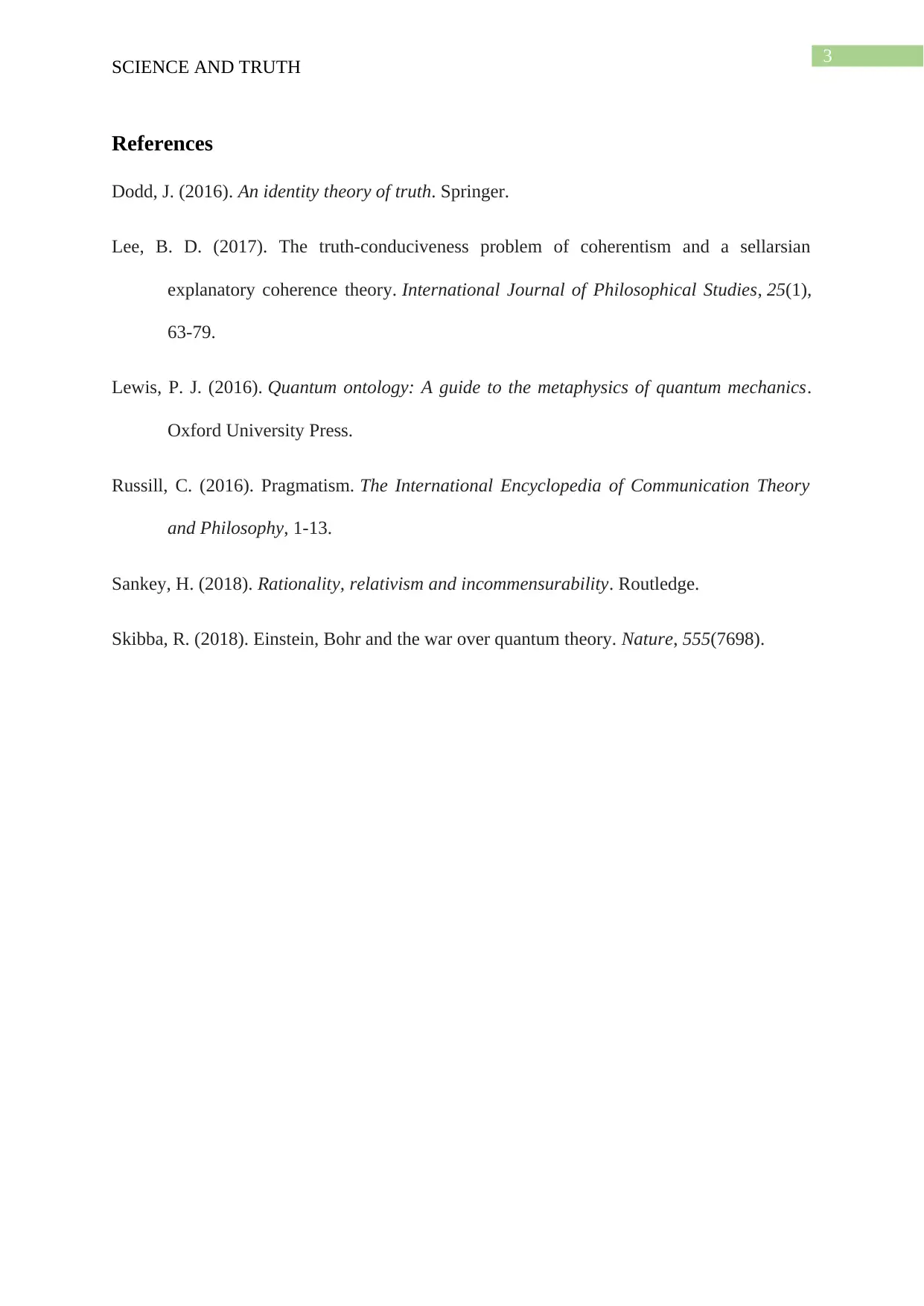Science and Truth: Exploring Theories and Perspectives in Philosophy
VerifiedAdded on 2022/08/17
|4
|789
|14
Essay
AI Summary
This essay delves into the multifaceted relationship between science and truth, a topic of ongoing debate in philosophy. It explores various theories of truth, including the correspondence theory, coherence theory, and conceptual relativism. The essay further examines pragmatism and instrumentalism, particularly in the context of scientific methods, and how they relate to the concept of truth. The impact of quantum mechanics and the contrasting views of Einstein and Bohr on the understanding of truth in science are also discussed. The author concludes by highlighting the complexities and challenges in defining truth, acknowledging the diverse perspectives and the ongoing evolution of this philosophical concept. The essay provides a comprehensive overview of the key concepts and debates surrounding science and truth.
1 out of 4





![[object Object]](/_next/static/media/star-bottom.7253800d.svg)